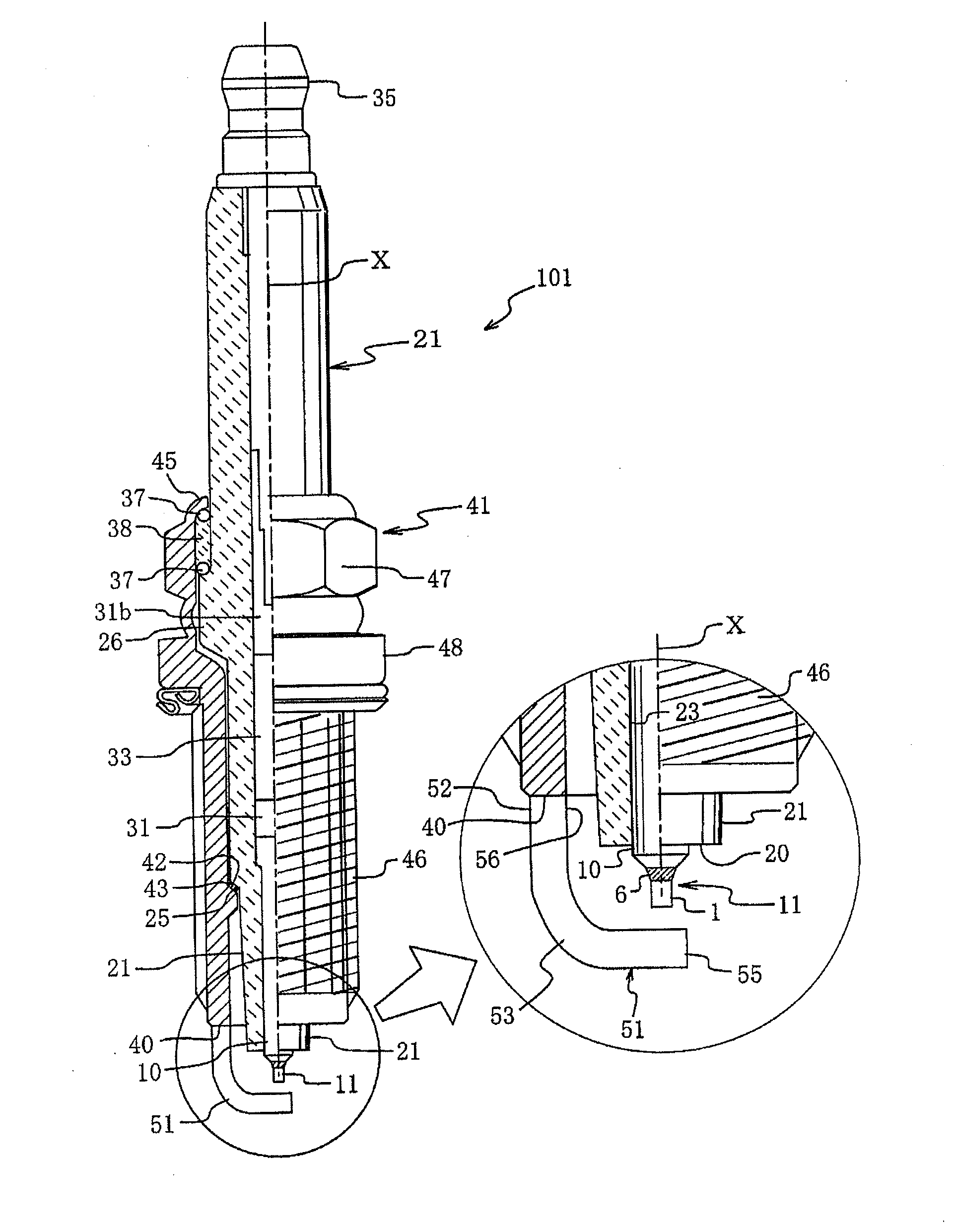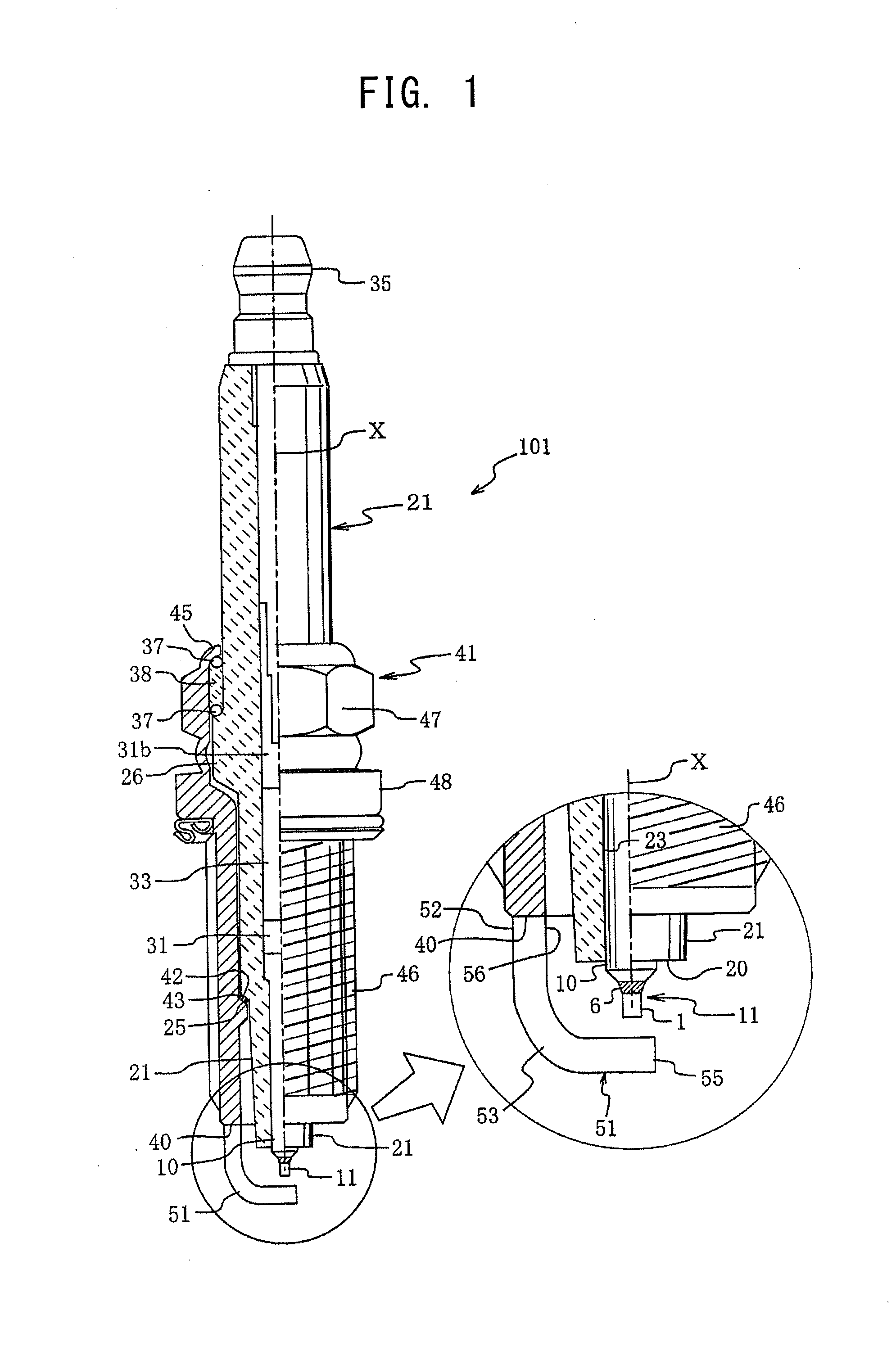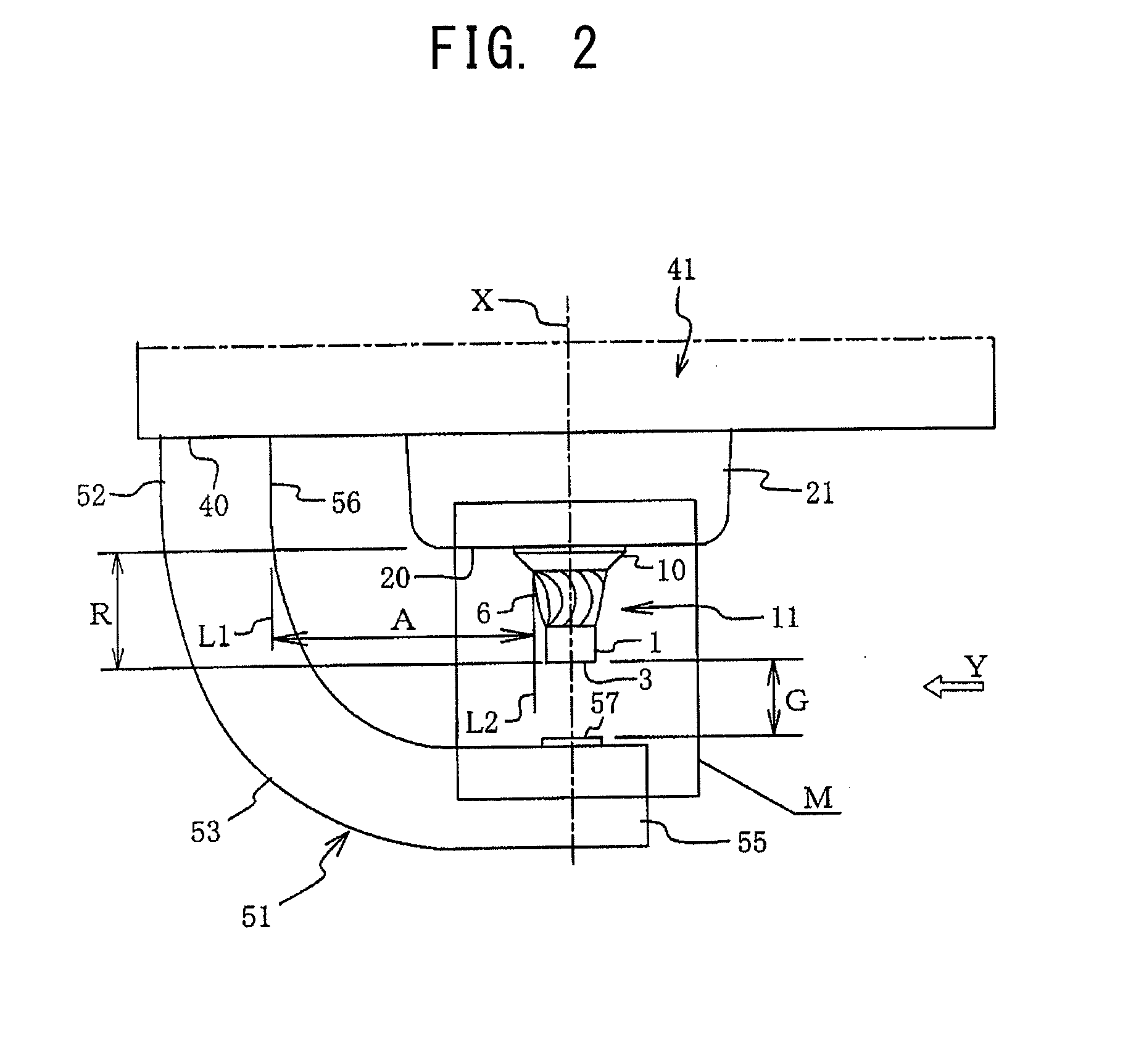Spark plug and manufacturing method therefor
a technology of spark plugs and manufacturing methods, applied in the field of spark plugs, can solve the problems of deterioration of ignition performance and high probability of abnormal discharge generation, and achieve the effects of enhancing sparking rate, effective prevention or reduction of abnormal discharge generation, and improving fuel ignition performan
- Summary
- Abstract
- Description
- Claims
- Application Information
AI Technical Summary
Benefits of technology
Problems solved by technology
Method used
Image
Examples
Embodiment Construction
[0048]A spark plug according to an embodiment of the present invention will be described in detail with reference to FIGS. 1 to 6. First, the overall configuration of the spark plug of the present embodiment is described. Since the spark plug and its component members, such as a metallic shell and an insulation member (ceramic insulator), are similar in material and basic constitution to publicly known ones, description thereof is brief. FIG. 1 is a vertical half-sectional view for explaining the overall configuration of a spark plug 101, accompanied by an enlarged view showing essential portions (front end portion) of the spark plug 101. FIG. 2 is a further enlarged view showing the essential portions (front end portion) of the spark plug 101.
[0049]As shown in FIG. 1, the spark plug 101 of the present embodiment is composed primarily of a ceramic insulation member 21 which assumes the form of a hollow shaft and in which a center electrode 11 having a noble metal tip 1 welded theret...
PUM
 Login to View More
Login to View More Abstract
Description
Claims
Application Information
 Login to View More
Login to View More - R&D
- Intellectual Property
- Life Sciences
- Materials
- Tech Scout
- Unparalleled Data Quality
- Higher Quality Content
- 60% Fewer Hallucinations
Browse by: Latest US Patents, China's latest patents, Technical Efficacy Thesaurus, Application Domain, Technology Topic, Popular Technical Reports.
© 2025 PatSnap. All rights reserved.Legal|Privacy policy|Modern Slavery Act Transparency Statement|Sitemap|About US| Contact US: help@patsnap.com



